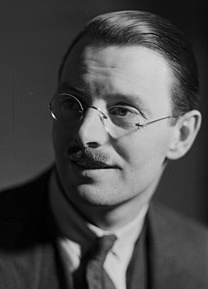Cork born, John Francis Whelan [1900 -1991] possibly better known as Sean O’Faolain was one of the most influential figures in 20th-century Irish culture. A short-story writer of international repute; he was also a leading commentator and critic.

In his book “An Irish Journey” (from the Liffey to the Lee), latter published first in 1940, he reflects on his visit to Liberty Square, here in Thurles, Co. Tipperary.
Sean O’Faolain writes,
“Wild or not, these Thurles people have much more edge to them than the easy-going Clonmel folk. Their town shows it. The great wide square, concrete from pavement to pavement, the bright shops, every one of them well-dressed, the busy air of the streets even on an ordinary afternoon and the almost total absence of antiquities, marks this out as a modern business-town, “with no nonsense about it.”
And it has gone on improving every year. Old residents tell me that their fathers have handed to them a very different picture of an older Thurles, when as one of them said to me, “you could step from dung-heap to dung-heap in the square”. Hovels surrounded the centre of the town. The elder Dr. Callanan, the father of the present Dispensary doctor, told me he once handled 175 cases of fever in a single epidemic and he had handled typhus as well as typhoid.
Older traditions can revive the famine days, when people died in the fields by the ditches, their mouths green from eating nettles, even as Spencer records from an earlier period; while, in those unions which Dan O’Connell opposed so inexplicably, the dying were laid in rows upon rows on the floor.
An old man I met on the bridge told me he recalls the time when the town might have been thought of as composed of six shopkeepers, who made “pots of money” out of the Big Houses all about, and who were so many Gombeen-men, or tight-fisted, hard-screwing middle-men to the farmers. But he said they are gone now with the froth of the river.
(The River, by the way, is still the Suir: it rises not that much more than a mile away from the Nore up near the Devil’s Bit).
“They’re gone with the big houses on which they relied”, and he waved his hand over the river, past the old 12th century castle, the town’s only relique, down towards Fethard and up the river towards Templemore. “Archerstown House, Lanespark House, Killeen House, Ballysheehan, New Park, Mobarnane, Coolmore, Derryluskan, Brownstown House, Ballyronan , Lloydsboro, Inch…. How many of them are left now?. Ah, ‘tis a pity. For they were fine houses and gave great employment.”
“But surely the beet factory“, I protested, “must employ as many as the whole lot of them put together.”
“Tisn’t alike”, he insisted, morosely. “Tisn’t alike, what’s a factory? Here to-day, gone tomorrow. What am I to a factory? No more than that shtone”, as he slapped the bridge parapet as if he wanted to crack his hand.
“They were dacent people – or the most of them were – and they attinded to the min that was working for ‘um. If a man got sick they’d give him the besht of the attention. If you get sick in the factory, what happens you, only to lie up and lose your wages, or maybe your job. Ah, tisn’t alike! There’s no nature in a factory.”
Nobody regrets more than the artist the passing of that old hierarchical form of society, so complete in its gradations of human order, still humanized in Ireland by contact with the natural life for the land, long after it had become dehumanized in England by the industrial revolution.
But it had many faults even here. Its fatal weakness was that the Big House people felt themselves here, not merely of a different class to the worker and the farmer – which was natural since it happened to be true – but of a different race or religion or life mode and they took their political philosophy from England, whose problems were of a quite different nature. Master and man were not one entity, with right and proper distinctions between them, but two separate entities. And that does not work”.
To Be Continued. [Note: Part 2, the final part can be read HERE.

Leave a Reply